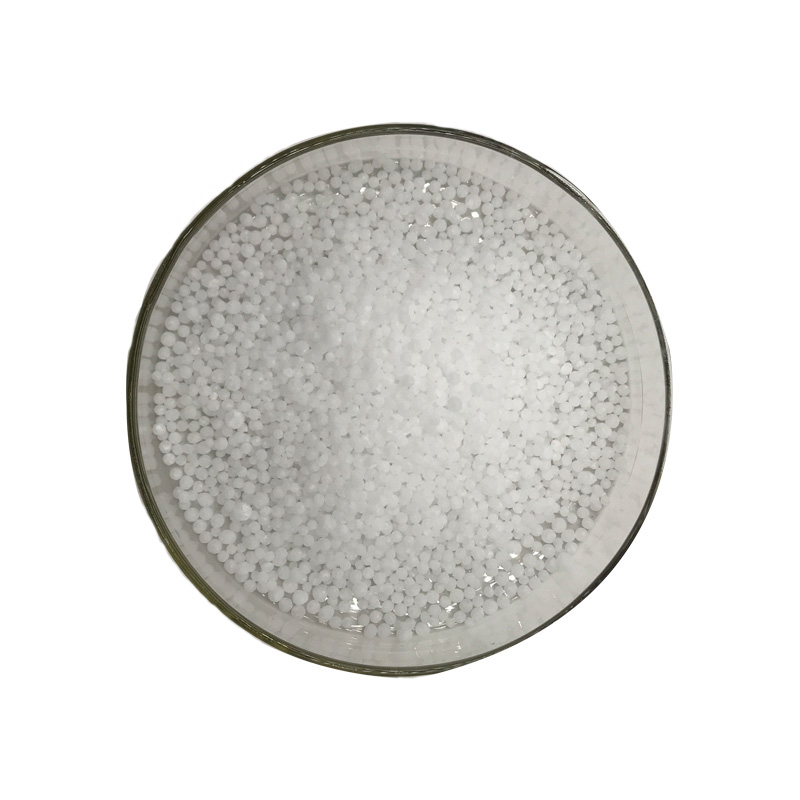Products Description of 3-Chloro-6-methylpyridazine CAS#1121-79-53-Chloro-6-methylpyridazine is a heterocyclic compound and chemical raw material. It has a low melting point and boiling point, and is usually light yellow to light beige in powder form.
Contact Now
Products Description of 1,2-Diformyloxyethane CAS#629-15-2Ethylene glycol diformate is a toxic substance that is liquid at room temperature and has a special odor.
Contact Now
Products Description of TRANS-1,2-DICHLOROETHYLENE CAS#156-60-5Trans-1,2-dichloroethylene is a chemical substance, a colorless, volatile liquid with a slightly pungent odor, flammable, and its vapor can form an explosive mixture with air. It can cause combustion and explosion when exposed to open flames and high heat. It can decompose into highly toxic phosgene and hydrogen chloride gas when heated in the air. It can react strongly with oxidants.
Contact Now
Products Description of Imidazo[1,2-b]pyridazine CAS#766-55-2Imidazolo[1,2-b]pyridazine can be used as a pharmaceutical synthesis intermediate, and can be prepared from 3-pyridazine as a reaction raw material and 2-chloroethylamine hydrochloride, and can be used to prepare 3-ethynylimidazo[1,2-b]pyridazine, an intermediate of ponatinib.Imidazo[1,2-b]pyridazine CAS#766-55-2 Chemical PropertiesMelting point 54℃density 1.29±0.1 g/cm3(Predicted)storage temp. Inert atmosphere,Room Temperaturesolubility Soluble in dimethylformamide.form powder to crystalpka5.30±0.30(Pre
Contact Now
Products Description of 1,2-O-Isopropylidene-Alpha-D-Xylofuranose CAS#20031-21-41,2-O-isopropylidene-α-D-xylofuranose can be used to prepare 3-deoxy-1,2-O-isopropylidene-D-xylofuranose. 3-Deoxy-1,2-O-isopropylidene-D-xylofuranose is a chiral intermediate for the synthesis of atorvastatin to produce the pharmacological side chain.
Contact Now
Products Description of 1,2-Benzisothiazol-3(2H)-oneCAS#2634-33-51,2-Benzisothiazol-3-one (BIT for short) is a major industrial bactericidal, preservative and enzyme inhibitor. It has an outstanding inhibitory effect on the growth of mold, algae and other microorganisms in organic media. It can solve a series of problems such as mold, fermentation, deterioration, demulsification and odor of organic products caused by microbial growth.
Contact Now
Products Description of 6-CHLOROIMIDAZO[1,2-B]PYRIDAZINE-2-CARBOXYLIC ACID CAS#14714-24-06-Chloromidazo[1,2-B]pyridazine-2-carboxylic acid can be used to prepare compounds which can be used as active pharmaceutical substances, in particular Trk antagonists, i.e. they block the intracellular kinase activity of Trk, e.g. TrkA (NGF) receptors. Tropomyosin-related kinases (Trks) are a family of receptor tyrosine kinases activated by neurotrophic factors. Trks play an important role in pain perception and in tumor cell growth and survival signaling.
Contact Now
Products Description of 5-CHLORO-3-METHYLBENZO[B]THIOPHENE CAS#19404-18-33-Methyl-5-chlorobenzothiophene is a pharmaceutical intermediate. 5-CHLORO-3-METHYLBENZO[B]THIOPHENE CAS#19404-18-3 Chemical PropertiesMelting point 33 °CBoiling point 87 °Cdensity 1.293±0.06 g/cm3(Predicted)storage temp. 2-8°Csolubility soluble in Methanolform powder to lumpcolor White to Yellow to OrangeCAS DataBase Reference19404-18-3(CAS DataBase Reference)Safety InformationHazard Codes Xi,XnRisk Statements 36/37/38-22Safety Statements 26-37/39Hazard Not
Contact Now
Products Description of 2-CHLORO-3-METHYLPYRAZINE CAS#95-58-92-CHLORO-3-METHYLPYRAZINE is a chemical. CAS No.is 95-58-9.Molecular Formula is C5H5ClN2.2-CHLORO-3-METHYLPYRAZINE Chemical PropertiesBoiling point 80 °C(Press: 27 Torr)density 1.234g/mlstorage temp. under inert gas (nitrogen or Argon) at 2-8°Cpka-0.31±0.10(Predicted)form Liquidcolor ColorlessLogP1.058 (est)CAS DataBase Reference95-58-9(CAS DataBase Reference)EPA Substance Registry SystemPyrazine, 2-chloro-3-methyl- (95-58-9)Safety InformationHazard Codes XnRisk Statements 22-37/38-41Safet
Contact Now
Products Description of 6-Methylpyridazin-3(2H)-One CAS#13327-27-06-Methyl-3(2H)-pyridazinone is a yellow crystalline powder with a melting point of 138°C.
Contact Now
Products Description of 2-Amino-5-Methyl-3-Thiophenecarbonitrile CAS#138564-58-6An impurity generated in the preparation of Olanzapine.2-Amino-5-Methyl-3-Thiophenecarbonitrile Chemical PropertiesMelting point 101-103°CBoiling point 318.5±42.0 °C(Predicted)density 1.26±0.1 g/cm3(Predicted)storage temp. under inert gas (nitrogen or Argon) at 2–8 °Csolubility soluble in Methanolform powder to crystalpka0.16±0.10(Predicted)color Light yellow to BrownInChIKeyYGXADLPRHBRTPG-UHFFFAOYSA-NCAS DataBase Reference138564-58-6(CAS DataBase Reference)Safety Information
Contact Now
Products Description of 3-Chloro-5-Methylpyridazine CAS#89283-3-183-Chloro-5-methylpyridazine is a pyridine derivative, commonly used as a pharmaceutical intermediate.3-Chloro-5-Methylpyridazine CAS#89283-3-18 Chemical PropertiesMelting point 139-140 °CBoiling point 259.7±20.0 °C(Predicted)density 1.234±0.06 g/cm3(Predicted)storage temp. Inert atmosphere,2-8°Cform liquidpka1.91±0.10(Predicted)color YellowCAS DataBase Reference89283-31-8Safety InformationHazard Codes Xi,XnRisk Statements 22HS Code 2933998090Product Application of 3-Chl
Contact Now
Products Description of Methyl 3-amino-2-pyrazinecarboxylate CAS#16298-03-6The molar refractive index of methyl 3-aminopyrazine-2-carboxylate is 38.44, the molar volume (m3/mol) is 116.0, the isotonic volume (0.2K) is 326.2, the surface tension (dyne/cm) is 62.4, and the polarizability (10-24cm3) is 15.24.Methyl 3-amino-2-pyrazinecarboxylate Chemical PropertiesMelting point 169-172 °C (lit.)Boiling point 300.8±37.0 °C(Predicted)density 1.319±0.06 g/cm3(Predicted)storage temp. Keep in dark place,Sealed in dry,2-8°Csolubility Chloroform, Methanolform Crystallin
Contact Now
Products Description of 2-Chloro-6-aminopyrazine CAS#33332-28-42-Amino-6-chloropyrazine is a chemical.CAS No.
Contact Now
Products Description of 4,5-Dichloro-3(2H)-pyridazinone CAS#932-22-94,5-Dichloropyridazin-3(2H)-one is an organic intermediate that can be used to prepare thiadiazole compounds 4-chloro-2-[(5-ethoxy-1,3,4-thiadiazole-2-)methyl]-5-piperidinyl-3(2H)-pyridazinone.
Contact Now
6-CHLORO-9-(TETRAHYDRO-2-PYRANYL)-PURINE Chemical PropertiesMelting point 149-151℃Boiling point 428.3±55.0 °C(Predicted)density 1.604Fp 213°(415°F)refractive index 1.7410storage temp. Inert atmosphere,Store in freezer, under -20°Cpka0.79±0.10(Predicted)form Solidcolor White to pale yellowCAS DataBase Reference7306-68-5(CAS DataBase Reference)Safety InformationHS Code 2933998090Factory and Equipment ShowFast delivery timeInventory 2-3 working days New production 7-10 working days
Contact Now
Products Description of 2-Amino-3-chloropyrazine CAS#6863-73-62-Chloro-3-aminopyrazine is a chemical.CAS No.
Contact Now
Products Description of 3-Chloro-2-hydroxypropyltrimethyl ammonium chloride CAS#3327-22-8This product can be converted into chloride (γ-trimethylammonium-β-hydroxybutyric acid) by cyanidation and hydrolysis.
Contact Now
Products Description of 4-Chloro-3-methylphenol CAS#59-50-7Colorless crystal. The melting point is 66°C (55.5°C), the boiling point is 235°C, 1g can be dissolved in 250ml of water at 20°C, more dissolved in hot water, and easily soluble in benzene, ether, ethanol, acetone, chloroform and petroleum ether. Can evaporate with water vapor. Used in organic synthesis, such as dyes, film preservatives, etc. Used as pharmaceutical preservative1.
Contact Now
Products Description of Isobornyl methacrylate CAS#7534-94-3Isobornyl methacrylate is a colorless, transparent liquid. Isobornyl methacrylate is a monomer that combines hardness and flexibility. Due to its molecular structure, its polymer has excellent high gloss, vividness, scratch resistance, medium resistance and weather resistance, and its hygroscopicity is significantly lower than that of MMA (methyl methacrylate).
Contact Now
Products Description of Para Chloro Phenol (4-Chloro Phenol) CAS#106-48-9Parachlorophenol, also known as 4-chlorophenol, is an organic compound with the chemical formula C6H5ClO. It is a white crystalline powder, slightly soluble in water, easily soluble in ethanol, ether, chloroform, and benzene.
Contact Now
Products Description of 1,2-Bis(2-chloroethoxy)ethane CAS#112-26-51,2-Bis(2-chloroethoxy)ethane is a transparent to slightly yellow liquid at room temperature and pressure, and is insoluble in water. It is often used as a material chemical intermediate and a reaction solvent in organic chemical reactions.
Contact Now
Zirconium, chloro glycine hydroxy aluminum complexes CAS#90604-80-1Factory and Equipment ShowFast delivery timeInventory 2-3 working days New production 7-10 working days
Contact Now
POLY(ETHYLENE GLYCOL) METHYL ETHER ACRYLATE Chemical PropertiesMelting point 6-7 °C(lit.)density 1.09 g/mL at 25 °C(lit.)Fp >230 °Fstorage temp. -20°Cform Granular Solidcolor White to off-whiteWater Solubility Soluble in waterEPA Substance Registry SystemPoly(oxy-1,2-ethanediyl), .alpha.-(1-oxo-2-propenyl)-.omega.-methoxy- (32171-39-4)Safety InformationHazard Codes TRisk Statements 45-46Safety Statements 53-36/37/39-24/25-22-45WGK Germany 3TSCA YesHS Code 39072090Factory and Equipment ShowFast delivery
Contact Now





![Imidazo[1,2-b]pyridazine CAS#766-55-2](https://d3rnfhc14zcmdf.cloudfront.net/cdn/ff/0zOUVGs0O2UNKg1sLuyBEd5hRn1Q9iSLX8YfXSek5M4/1720183747/public/styles/chanpinzhutu/public/2024-07/16-1_2.jpg?itok=yIuJQIIN)


![6-CHLOROIMIDAZO[1,2-B]PYRIDAZINE-2-CARBOXYLIC ACID CAS#14714-24-0](https://d3rnfhc14zcmdf.cloudfront.net/cdn/ff/vbP0AMU1SZWoeuPOBqSMI1QHHcX8Iq0KlluvtoZIwQw/1717571201/public/styles/chanpinzhutu/public/2024-06/%E9%BB%84%E8%89%B2%E9%A2%97%E7%B2%92%20%283%29_0.jpg?itok=ni7182_2)
![5-CHLORO-3-METHYLBENZO[B]THIOPHENE CAS#19404-18-3](https://d3rnfhc14zcmdf.cloudfront.net/cdn/ff/SQtnDOdiT42PpMs1NszZi7Tv_d_DUIp_Dx3j0P5hPM4/1720092385/public/styles/chanpinzhutu/public/2024-07/%E5%BE%AE%E4%BF%A1%E5%9B%BE%E7%89%87_20240702152530_3.jpg?itok=CrylVEjT)
























